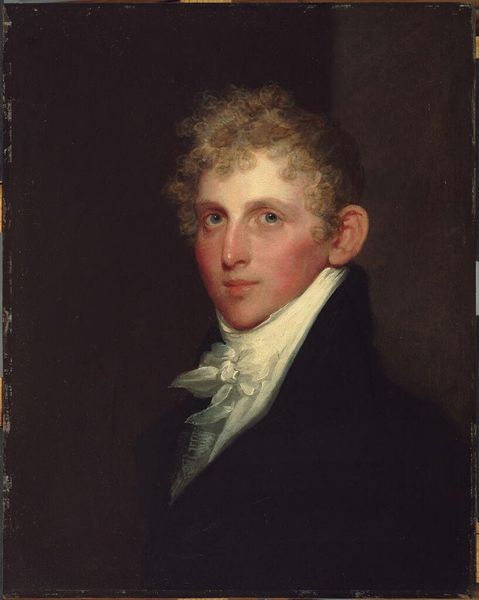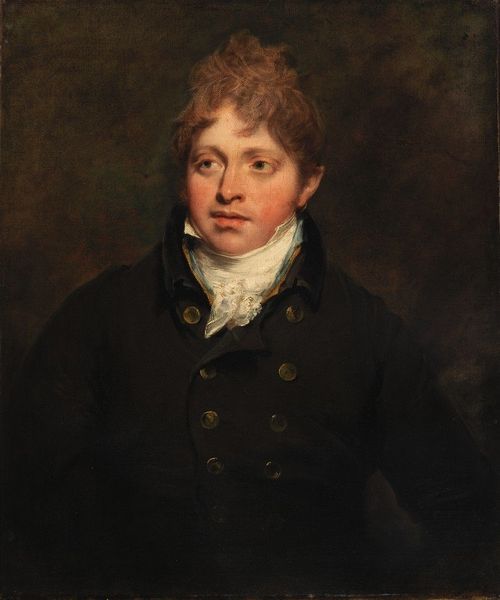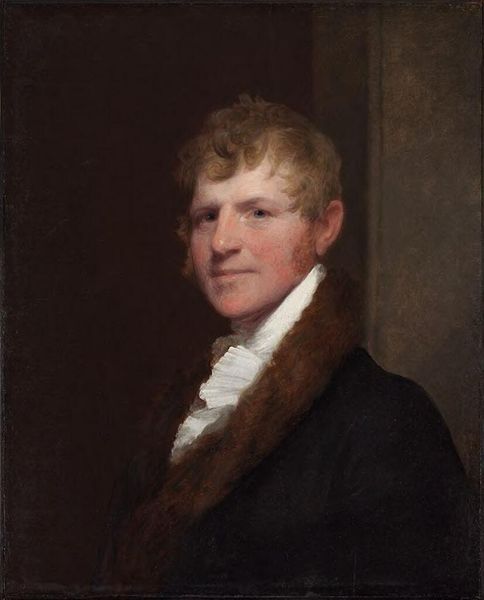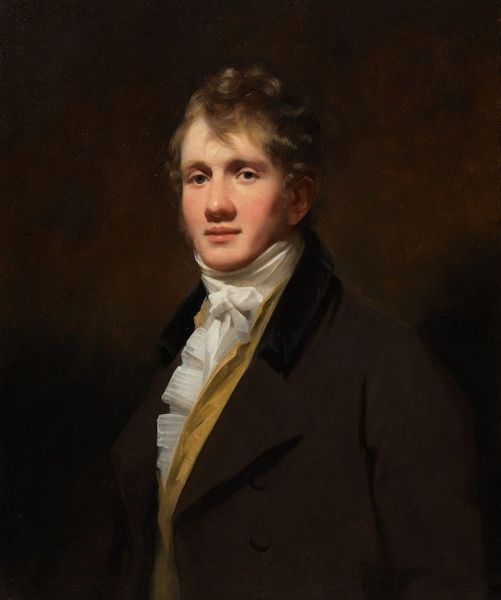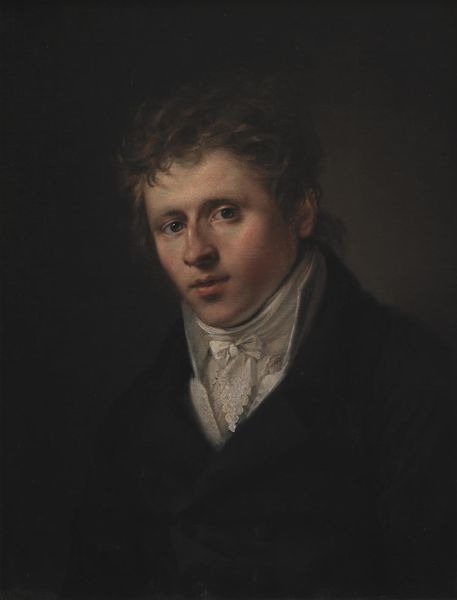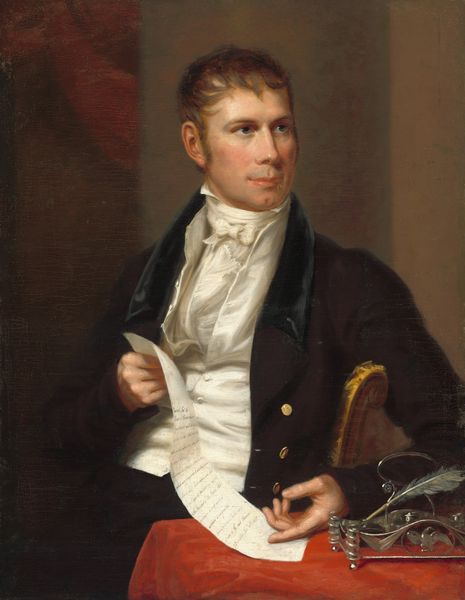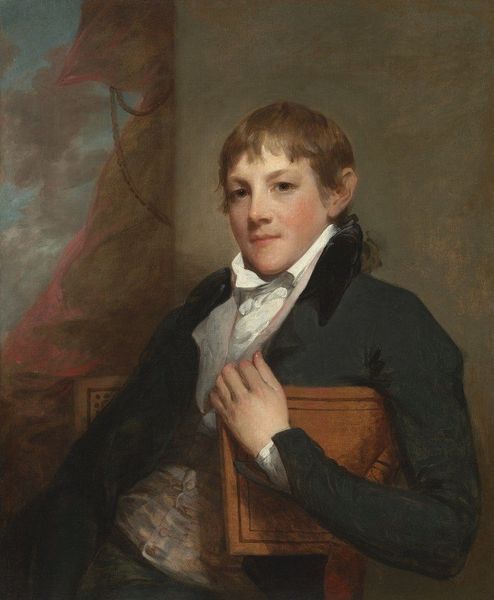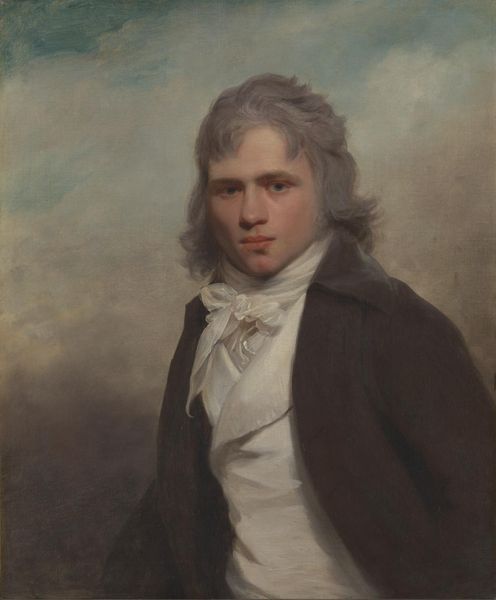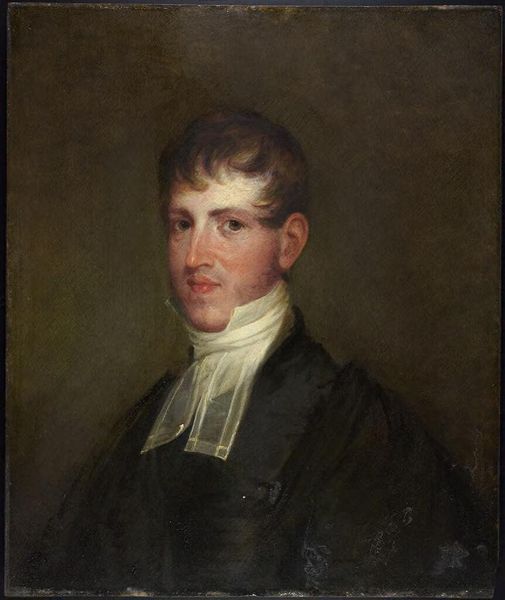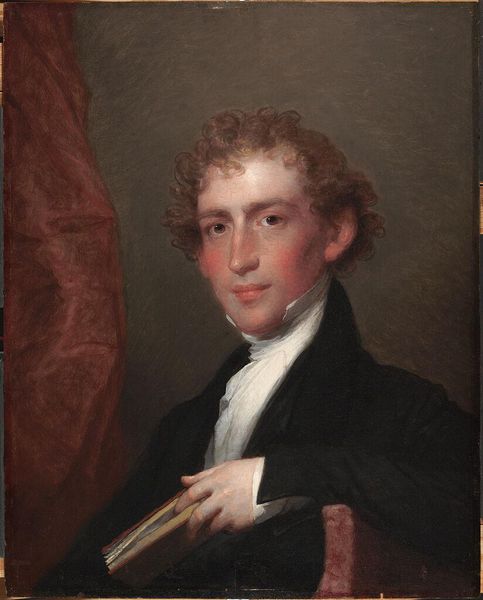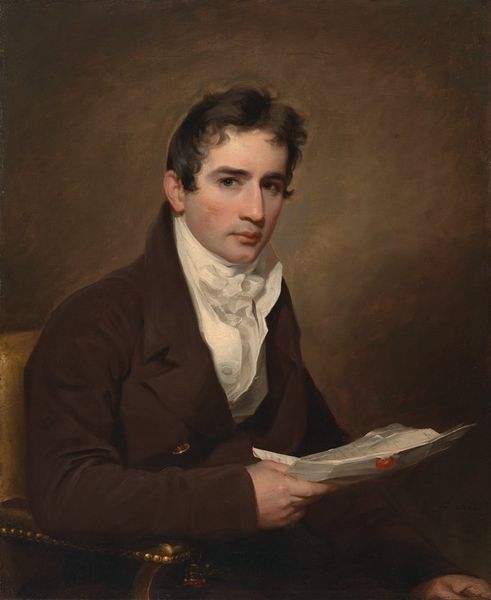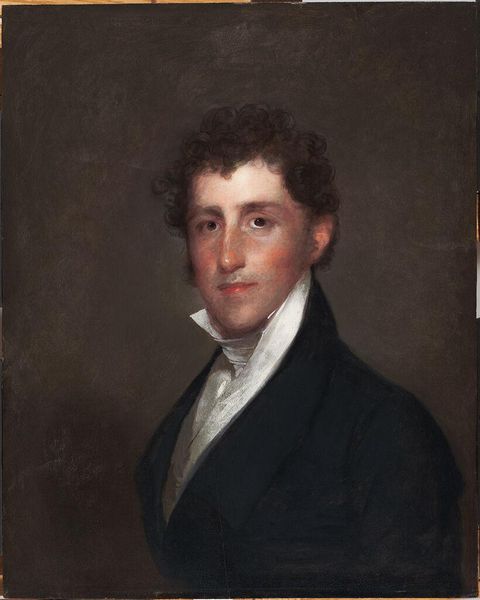
oil-paint
#
portrait
#
neoclacissism
#
oil-paint
#
history-painting
#
academic-art
Copyright: Public Domain: Artvee
Editor: Here we have Gilbert Stuart's oil portrait, "Dr. James Stuart," from around 1815. It’s a rather formal composition, and I'm immediately struck by how the figure seems poised and confident. What is your reading of this portrait, considering its time? Curator: This portrait provides insights into the construction of elite masculinity during the Neoclassical period. How do social roles and class structure become visible, become *image* in painting like this? Notice, for example, the muted background—it emphasizes the subject's presence and conveys a sense of dignity. Editor: That makes sense. His clothing seems part of that too, projecting status, and framing the face. What do you notice about the painting that speaks to those codes? Curator: Indeed. The dark coat against the ruffled white shirt, while standard for portraits of gentlemen at the time, signifies social standing and wealth, which reflects the values and expectations of the elite class that these portraits would circulate within. Also, portraits like this one played an essential role in shaping public perceptions. It's carefully calculated, isn't it? Editor: Absolutely. I hadn’t thought about it in terms of public perception. It’s interesting how the portrait itself actively participates in the promotion and preservation of certain values, sort of beyond the individual. Curator: Precisely. And, considering Stuart’s role as a portraitist of the American elite, can you imagine what those specific, intentional aesthetic choices meant in constructing national identity at the time? Editor: That definitely shifts my view. It’s not just about one person’s likeness, it is also an artifice shaping social and political thought of the era. Thank you for that illuminating analysis!
Comments
No comments
Be the first to comment and join the conversation on the ultimate creative platform.
